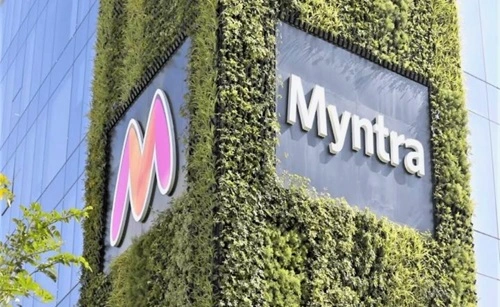Myntra, established in 2007 and acquired by Flipkart in 2014, has solidified its position as a leading online fashion retailer in India. As of January 2025, a comprehensive SWOT analysis (Strengths, Weaknesses, Opportunities, Threats) offers insights into Myntra’s current market standing and future prospects.
Strengths
1. Financial Turnaround and Profitability: In the fiscal year ending March 2024, Myntra reported a net profit of ₹30.9 crore, a significant improvement from a loss of ₹782.4 crore in FY23. This turnaround was driven by a 14.71% increase in revenue, reaching ₹5,121.8 crore, and effective cost optimization strategies.
2. Diverse Product Portfolio: Myntra offers an extensive range of fashion and lifestyle products, including clothing, footwear, accessories, and beauty items. The platform features over 750,000 styles from more than 3,000 domestic and international brands, catering to a wide audience.
3. Strong Brand Recognition and Market Leadership: As one of India’s most recognized online fashion retail brands, Myntra enjoys high brand recall among urban and millennial customers. Its reputation for quality and trendy products reinforces its leadership in the online fashion retail segment.
4. Technological Innovations: Myntra has integrated advanced technologies, such as augmented reality for virtual try-ons, enhancing the customer shopping experience and reducing return rates. These innovations demonstrate Myntra’s commitment to leveraging technology for customer satisfaction.

Weaknesses
1. Intense Market Competition: The Indian e-commerce fashion market is highly competitive, with major players like Amazon Fashion and AJIO vying for market share. This intense competition can limit Myntra’s market expansion and necessitate continuous innovation and marketing efforts.
2. Dependence on the Indian Market: Myntra’s operations are predominantly concentrated in India. This geographic limitation exposes the company to risks associated with regional economic fluctuations and regulatory changes.
3. High Operational Costs: Despite achieving profitability, Myntra’s operational expenses remain substantial. In FY24, the company reported total expenses of ₹5,123 crore, indicating the need for ongoing cost management to maintain profitability.
Opportunities
1. Expansion into Quick Commerce: Myntra’s introduction of M-Now, a 30-minute delivery service for fashion and beauty products, positions the company to capitalize on the growing demand for quick commerce. This service can enhance customer satisfaction and provide a competitive edge.
2. Growth in Tier II and III Cities: The increasing internet penetration and adoption of online shopping in India’s smaller cities present a significant opportunity for Myntra to expand its customer base and drive revenue growth.
3. Private Label Expansion: Developing and promoting private label brands can offer higher profit margins and strengthen customer loyalty. Myntra’s existing private labels, such as Roadster and HRX, have been successful, indicating potential for further growth in this area.
4. Sustainability Initiatives: With a growing consumer preference for sustainable fashion, Myntra can explore eco-friendly product lines and sustainable practices to attract environmentally conscious customers and differentiate itself in the market.
Threats
1. Regulatory Challenges: The e-commerce sector in India is subject to evolving regulations, including data protection laws and foreign investment policies. Compliance with these regulations can be complex and may impact Myntra’s operations.
2. Economic Fluctuations: Economic downturns can affect consumer spending patterns, leading to reduced discretionary spending on fashion and lifestyle products, which could impact Myntra’s sales.
3. Supply Chain Disruptions: Dependence on a vast network of suppliers and logistics partners makes Myntra vulnerable to supply chain disruptions caused by factors like natural disasters, geopolitical tensions, or pandemics, potentially affecting product availability and delivery timelines.
4. Cybersecurity Risks: As an online retailer, Myntra is susceptible to cybersecurity threats, including data breaches and cyber-attacks, which can compromise customer data and erode trust in the platform.
Conclusion
As of January 2025, Myntra has demonstrated resilience and strategic acumen, achieving profitability through revenue growth and cost optimization. The company’s strengths in brand recognition, diverse product offerings, and technological innovation position it well in the competitive e-commerce fashion landscape. However, Myntra must continue to navigate challenges such as market competition and operational costs while seizing opportunities in quick commerce, market expansion, and sustainability to sustain its growth trajectory.














